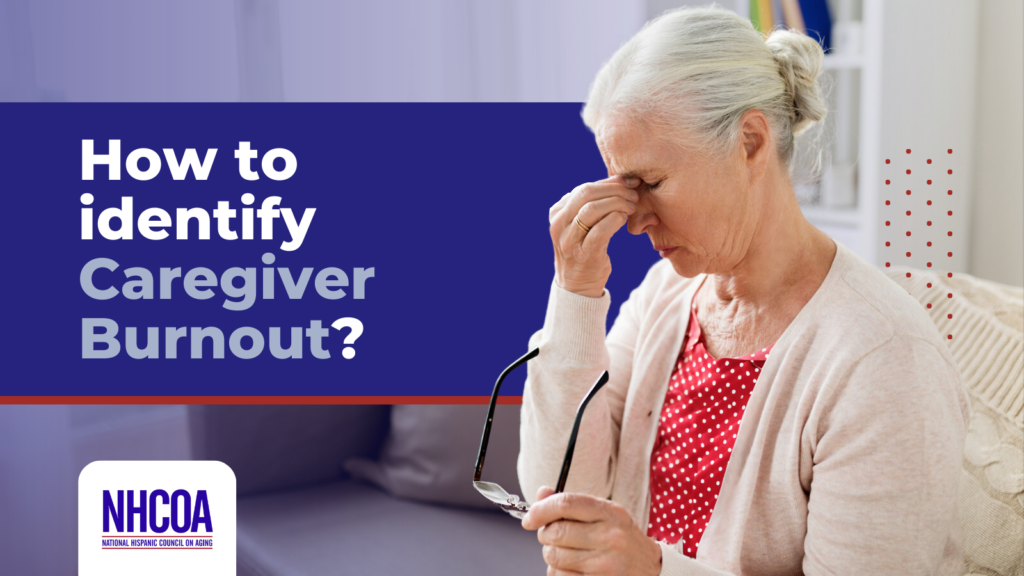
Caregiver burnout is a syndrome of overburdening that manifests itself in physical, emotional and mental exhaustion that occurs in people who assume the role of caring for a loved one for a long period of time.
While it is true that caring for others is a rewarding experience, after a while and due to many factors, it can cause emotional and physical stress, negatively affecting their mood and even their social relationships. This syndrome can lead to a deterioration of the caregiver-patient relationship and to the disappearance of the feeling of self-fulfillment.
There are symptoms that can be identified and it’s important to look for early signs that you may be suffering from caregiver burnout. Frequently, caregivers experience guilt, sadness, tension, and loneliness, and they stop practicing leisure and fun activities. They also tend to isolate themselves from their social and family environments.
In addition, other symptoms such as stress, anxiety, depression, fatigue, lack of energy, continuous exhaustion, irritability, insomnia, inability to relax, palpitations, frequent mood swings, constant apathy, emotional tension, hopelessness and resentment may be observed. This syndrome is also characterized by difficulty concentrating, loss of appetite and cephalalgia (headache).
The risk factors for caregiver burnout vary and affect the caregiver depending on conditions such as:
- The dependent person is at an advanced age.
- Aggressiveness in the dependent person’s environment.
- Suffering from a considerable number of physical and psychological illnesses or pathologies for a single caregiver.
- Lack of involvement of other family members in the care of the dependent person.
- Lack of training and information for the caregiver about the dependent person’s condition and how to provide care.
- When the caregiver is not part of an association or support group.
It is important to emphasize that caregiver burnout affects informal caregivers, i.e., people who are relatives or loved ones of the dependent person, who are usually women. The Scientific Electronic Library Online of Spain defines them as “those people who perform all the tasks of caring for dependent persons, are characterized by not having specific training in the field of caregiving, do not receive financial remuneration for the work performed and do not have a stipulated schedule, devoting most of their time to the task of caregiving“.
Once the symptoms have been identified, it is recommended to treat the sufferer as soon as possible. Here are some recommendations to treat it:
● Ask for help: It is necessary to share that responsibility and ask for help from family members or other professionals to help cope with the tasks that caregiving entails or negotiate to distribute the burden in a better way that relieves the informal caregiver.
● Make time for yourself: It is crucial to maintain a routine beyond the responsibilities of caring for a dependent person. Caregiving can be physically and mentally exhausting, and it is encouraged to have activities that allow you to disconnect from those tasks and the person being cared for; rather, take care of yourself. For example: exercise, get adequate rest, eat a balanced diet, practice sports that you enjoy or leisure activities that you prefer.
● Do not neglect your social environment: It is recommended to keep in touch with close friends and open up to new spaces to meet other people, as it is important to relax, separate from the work environment and be present in a reality outside of work.
It is also advisable to adopt an active and more participative attitude as a caregiver. This means seeking more information about the needs of the person being cared for, getting information about the disease he or she is suffering from, training as a caregiver, participating in discussions, and participating in support groups that can accompany the caregiver during this stage.
Caregiver burnout is a potential health risk for caregivers, so understanding the risks and being aware of the symptoms can make a difference. Following the recommendations presented in this article will improve the caregiver’s well-being and quality of life, as well as greatly benefit the caregiver’s mood and physical condition to better respond to the responsibilities of his or her role.
References:
Síndrome del cuidador quemado: 5 estrategias para prevenirlo (fpmaragall.org)
Síndrome del cuidador quemado (isciii.es)
¿Cómo detectar y evitar el síndrome del cuidador quemado? (reyardid.org)
2 – El burnout o síndrome del cuidador quemado – Cuidar al que Cuida 3.0 (fsyc.org)

Recent Comments